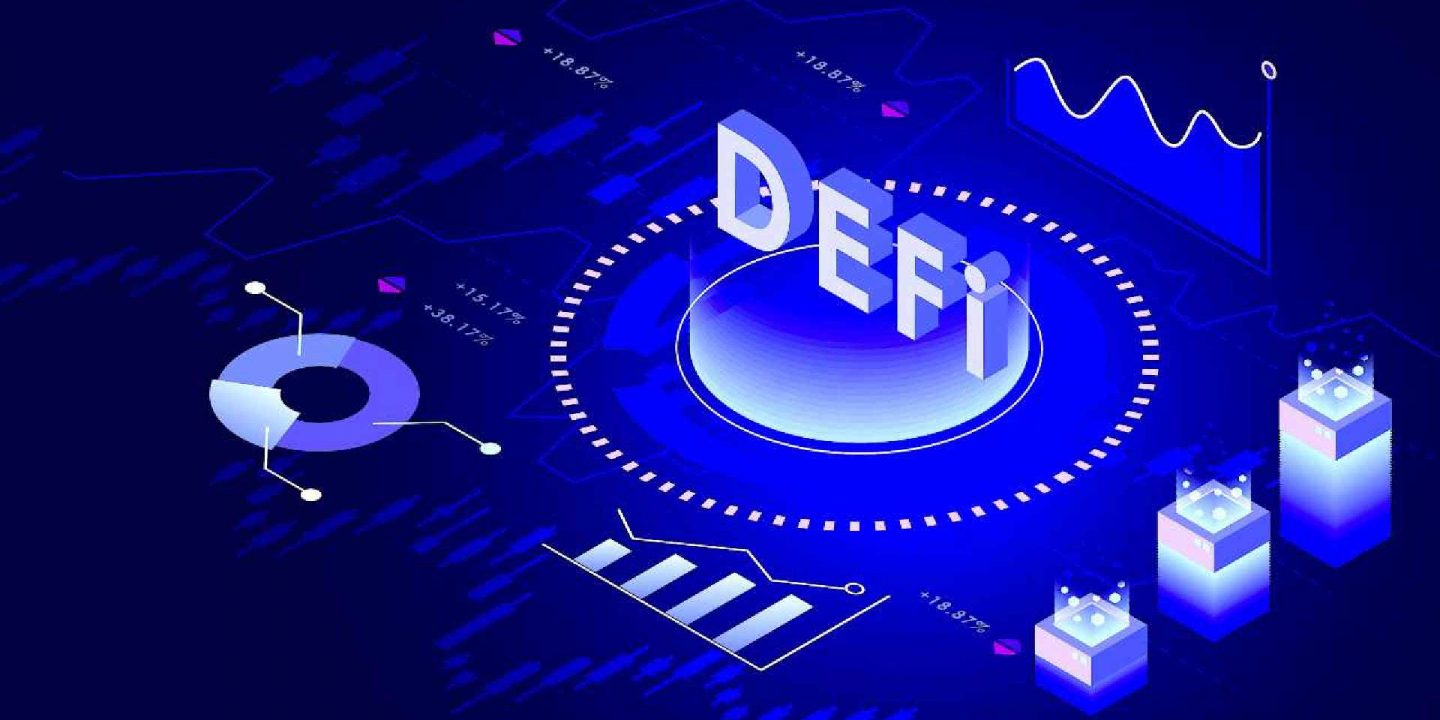
Decentralized Finance (DeFi) is the latest buzz in the world of cryptocurrencies. With DeFi, the financial sector is moving towards a more open and transparent system that allows anyone to participate in a permissionless manner. One of the critical components of DeFi is the Automated Market Maker (AMM), which enables liquidity providers to automatically and continuously adjust prices based on supply and demand. In this blog post, we will dive deep into the role of AMMs in DeFi, their benefits, limitations, and use cases.
What are Automated Market Makers (AMM)?
Automated market makers, or AMMs, are decentralized protocols that facilitate constant market-making and price discovery for digital assets like tokens, NFTs or other scarce goods. They enable open, permissionless, and transparent markets with 24/7 liquidity that can attract broader user bases and push platform innovation faster than traditional marketplaces.
AMMs use blockchain-based tools to facilitate automated transactions without the need for human market makers. They hold reserve pools of assets to provide price stability, ensure constant liquidity and enable quick entry/exit of trades with low slippage. These price-stable liquidity pools are critical for building thriving communities and ecosystems around new platforms or projects.
AMMs govern themselves through code and protocol rules. There are no individual market makers to go offline, show bias or implement unfair practices. Every trader on an AMM has an equal opportunity to provide or take liquidity.
The most popular AMMs today are Uniswap, Sushiswap, PancakeSwap, and Curve. They allow users to swap between cryptocurrencies or provide liquidity for token sales and NFT launches. Anyone can participate as a liquidity provider by adding pool assets and earning trading fees. Or join as a trader taking advantage of opportunities and liquidity with just a few clicks.
Importance of Automated Market Makers AMMs in Decentralized Finance
AMMs play a crucial role in decentralized finance by facilitating constant liquidity and price discovery for digital assets like tokens, NFTs, and other scarce goods. They enable open, transparent, and permissionless markets essential for building DeFi applications, platforms, and communities.
AMMs use intelligent contracts and automated price-balancing mechanisms rather than human market makers. This results in markets that never go offline have lower fees, show no bias, and implement fair practices through code and incentives rather than individuals. The constant liquidity and price stability provided by AMMs is necessary for users to trust DeFi protocols and participate with confidence.
AMM liquidity pools also provide opportunities for earning yield and interest on assets. By providing assets as liquidity to pools, users can earn trading fees and incentive payments over time. It makes AMMs essential for accessing innovative yield generation and passive income streams in DeFi. More users taking advantage of these opportunities means more overall activity, value, and progress.
AMMs also enable new governance, ownership, and economics models built on DeFi protocols. Communities can gain voting rights, revenue shares, NFTs, or other scarce digital assets representing governance power over platforms and their futures. It transitions control from companies to the people and communities, contributing most to the ongoing success of open-source, decentralized applications.
Continuing progress around AMM enhances DeFi through new features, improved incentives, lower costs, better price oracles, integration with more protocols, and expansion into new market segments. AMMs could eventually provide options contracts, prediction markets, carbon exchanges, lab-grown meat markets, diamond exchanges, or whatever else decentralization may enable. The future of finance is open and permissionless, built by motivated individuals tackling complex problems to benefit all.
How Automated Market Makers (AMMs) Work?
AMMs are decentralized protocols facilitating constant liquidity and price discovery for digital assets without human market makers. They hold reserve pools of assets called liquidity pools that provide price stability and enable quick trading with low slippage. Anyone can participate in AMMs as a liquidity provider or trader.
Liquidity providers add assets to pools to earn trading fees and incentives. Their assets are automatically rebalanced through code to maintain a target price range, mitigating the risk of significant price swings that could imperil positions. Liquidity providers also earn swap fees from each trade, paying them over time as an incentive to keep assets in pools.
Traders use AMMs to quickly swap between assets or leverage positions with minimal price impact. They pay a small swap fee on each trade, which goes to liquidity providers as an incentive to maintain deep liquidity. Traders can swap with just a few clicks and often at a lower cost than centralized exchanges. Liquidity is constant, enabling trading 24 hours a day, 7 days a week.
AMMs govern themselves through code, not individuals. Rules around fees, incentives, rebalancing, and other policies are hardcoded into smart contracts at deployment and cannot be changed without consensus. There is no single point of failure or bias that can undermine the integrity of an AMM. Every participant has equal access and opportunity based on transparent rules.
The value propositions of AMM attract innovative DeFi applications, platforms, and communities. Projects can raise funds through AMM liquidity pools, provide governance power to communities through scarce digital assets, and build tools/protocols relying on constant AMM liquidity and transparent price feeds. As these platforms and communities grow, new developers join the ecosystem, building on top of AMMs, and boosting value and progress overall.
Benefits of Automated Market Maker (AMM) in Decentralized Finance
AMMs bring significant benefits to DeFi, including constant liquidity, low fees, transparent rules, permissionless access, and opportunities to generate yield. They facilitate the 24/7 trading of digital assets at minimal cost and risk compared to centralized alternatives.
Constant liquidity means assets can be swapped or positions leveraged whenever needed without the concern that the market is closed or facing huge price swings when reopening. It provides the confidence for users to fully explore innovative DeFi applications and participate actively in platform communities. Without reliable liquidity, mainstream adoption of DeFi would remain elusive.
Low fees refer to the minimal costs of swapping between assets or accessing funds on demand. AMMs charge small trading fees, often 0.3% or less, compared to the high fees of centralized exchanges. Low fees make DeFi protocols more accessible and attractive for traders, especially those making frequent moves. They pass along more value to users rather than profits.
Transparent rules refer to the open-source code that governs AMMs and ensures equal access/opportunity through coded policies rather than individuals. There are no dubious changes to price oracles, hooks for insider front-running or manipulative “upgrades.” Rules are transparent and immutable, incentivizing trust in DeFi marketplaces.
Permissionless access means that any connected wallet can participate in AMMs immediately without requiring lengthy onboarding processes or restrictions based on location, identity or other factors. DeFi is open to contributions and opportunities from all. Censorship resistance is core to its vision and value propositions.
Opportunities to generate yield refer to earning interest and profits through providing liquidity to AMM pools or leveraging assets with DeFi protocols. Liquidity providers can earn swap fees and incentive payments by supplying pool assets. Traders can achieve high returns through leverage, lending, borrowing, and more with minimal risk compared to centralized finance. Yield generation makes DeFi appealing and valuable for more participants.
While risks exist around impermanent loss, front-running, hacks/scams, and other exploits, the significant benefits of AMM motivate progress in mitigating hazards. Transparency, security audits, insurance funds, and platform quality/trust scores help reduce risks over time as DeFi matures. For many, the rewards of abundant yield, low cost, and permissionless opportunity outweigh potential downsides, especially compared to traditional finance.
Limitations of (Automated Market Makers) AMMs
AMMs provide significant benefits to DeFi, including constant liquidity, low fees, transparent rules, permissionless access, and yield opportunities. However, certain limitations exist, especially around scalability, impermanent loss, front-running risks, and scams/rug pulls.
Scalability
Scalability refers to the ability of AMMs and DeFi protocols to handle high volumes of trading activity with acceptable performance. While scalability has improved through upgrades, it remains a challenge, especially for larger trades or during periods of high volatility. Scaling issues can lead to delays, failed transactions, frontend/backend crashes, and poor user experiences, hindering mainstream adoption.
Impermanent loss
Impermanent loss occurs due to price fluctuations when providing assets as liquidity to AMM pools. The value of assets in the pool may decrease if the price changes, reducing the overall value of the position even if more assets have been earned through trading fees and incentives. This risk discourages larger deposits of valuable assets, limiting the capital that can be deployed to earn yield and scale the platform.
Front-running risks
Front-running risks refer to other traders gaining an unfair advantage using collateralized borrowing or leveraged positions to take a larger order before another trader. It can manipulate markets and extract excess profits, undermining trust in the fairness and integrity of the system. Though coded rules aim to disincentivize malicious behavior, rule-based systems can still be exploited by those motivated enough to do so.
Risks of scams and frauds
There are also risks of scams, fraud, hacks, exploits, rug pulls, and other malicious behavior typical to any developing technology space with a mix of interested participants, including those with unethical motivations. Naive or careless users can lose assets through scams taking advantage of the complexity around DeFi. While risks can be mitigated, they are unlikely to be removed completely, especially as innovations emerge faster than adequate safeguards.
Additional limitations include lack of insurance, limited interoperability, insufficient tooling/education for new users, governance centralization in some protocols, and single points of failure (even in theoretically decentralized systems). There are also regulatory uncertainties around the legal status of DeFi applications, especially those providing financial services in a relatively unregulated space.
Automated Market Maker (AMM) Use Cases in DeFi
AMMs provide essential infrastructure enabling many innovative DeFi applications and use cases. Some primary ones include constant liquidity and trading, yield generation, token launches, governance models, lending/borrowing protocols, and synthetic assets.
Constant liquidity and low-cost trading refer to the ability to swap between assets or access funds whenever needed at minimal fees. AMMs facilitate 24/7 trading and leverage opportunities with little price impact or slippage compared to centralized exchanges. It provides confidence for active participation in DeFi platforms and communities.
Yield generation includes earning interest and profits by providing assets as liquidity to AMM pools or using leverage and borrowing capabilities. Liquidity providers earn swap fees and incentives from pools, while traders can achieve high returns with little risk. Yield makes DeFi appealing and helpful in generating income or supplementing expenses.
Token launches frequently use AMM pools for liquidity and price support after an initial offering. Founders allocate a percentage of tokens to AMM pools, creating incentives for-long term price stability, trading, and community growth to benefit all token holders. ICOs/IDOs can gain more transparency and decentralization through AMMs rather than venture capital.
Conclusion
AMMs have emerged as an integral component of the DeFi ecosystem, offering a more efficient and accessible system for liquidity provision. Their ability to provide liquidity without requiring market makers or order books is a significant improvement over traditional market making. With the continued growth of DeFi, we can expect to see more innovative AMM solutions emerging shortly. As we move towards a more decentralized financial system, AMMs will play a crucial role in facilitating the growth and adoption of DeFi.











